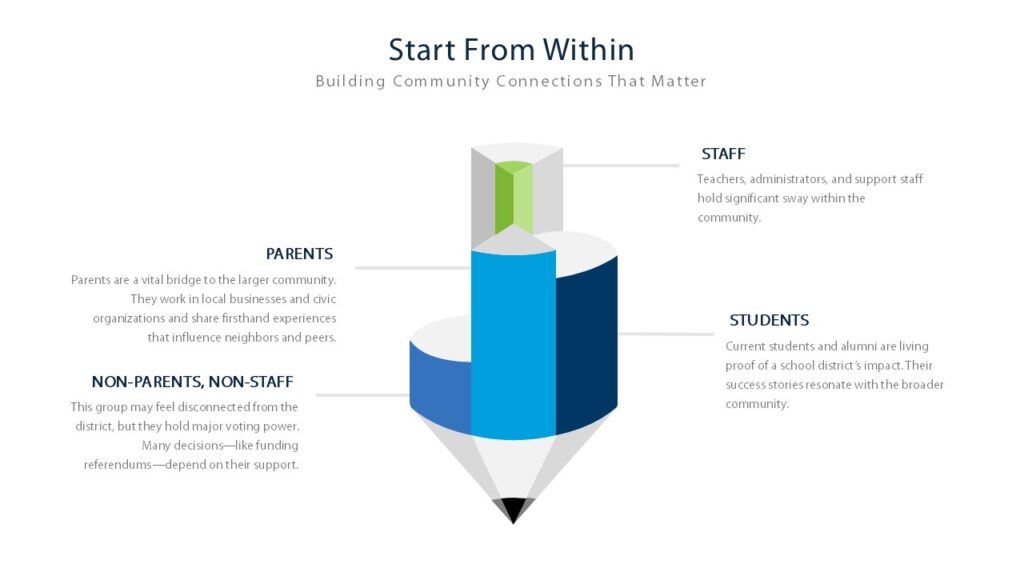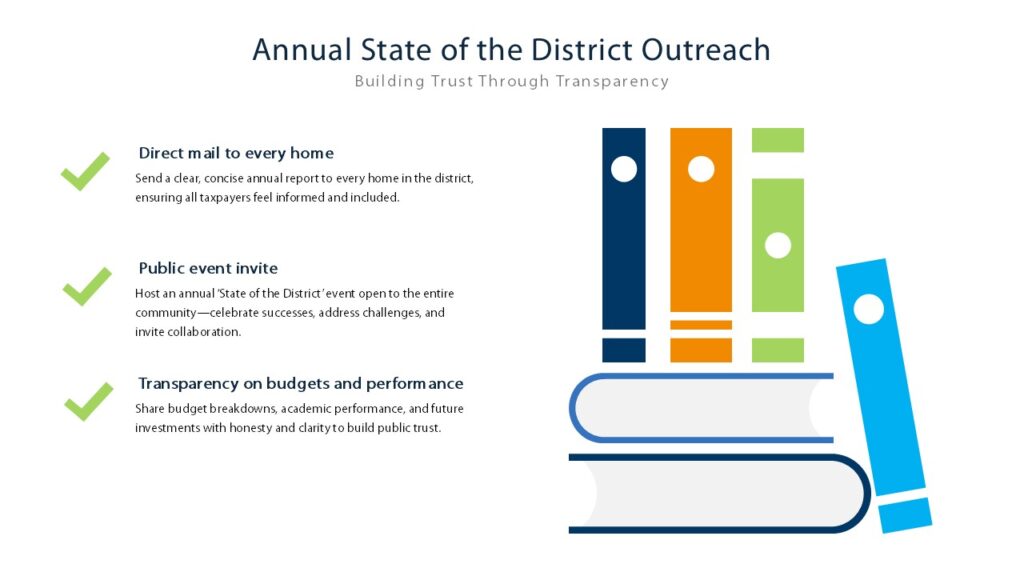Engage the “Silent 75”
A New Community Relations Approach for Public Schools
Public schools face a new competitive landscape. The growth of private and charter schools makes marketing and branding essential to boost enrollment. Public schools hire branding firms and marketing staff to increase demand and awareness. Advertisements for public schools appear on television and billboards.
Beyond branding, American public schools need a new community relations approach that builds relationships with a broader audience. While marketing is focused on student enrollment, strategic community relations reach 75% of folks who do not have children or staff members in the district.
Why are non-parents and non-staff a priority? The “silent 75” are the majority in communities with little reason to engage with public schools. Their voices are not heard until they consider school bond referendums, school board elections, and other ballot questions. They have an outsized impact on the future of public schools.
Public information campaigns during bond referendums highlight disconnected community relations with non-staff and non-parents. Misinformation about school districts and past perceptions of “when I was in school” persist. This breakdown in communication leads to negative voter sentiment.
Public school districts need a new approach to community relations that engages people who do not have kids or teach in schools. Beyond branding, build relationships, trust and mutual understanding.
How do school districts build connections with non-parents and non-staff? Start from the inside out.

Teacher and staff engagement is the foundation. While they represent a small percentage of communities, they are district ambassadors whose opinions drive sentiment about school districts.
Here are some specific ideas to consider:

Students and graduates engaged in communities are the best ambassadors. They embody school district missions – educated, engaged citizens improving communities.
Parents and staff may be 25% of voters during elections. These groups have established communication channels, such as digital newsletters, SMS messaging, events, etc. Parents greatly influence the community as they work for local organizations and businesses. What they understand about the school district and share with friends, co-workers and neighbors will move the needle in a positive direction.
How do you reach the “silent 75”—the non-parents, non-staff who are unengaged with the school district? Again, these folks are often 75% of the voters participating in school elections. Their relationship with the school district impacts voter-approved funding like Physical Plant and Equipment Levies (PPEL) and bond referendums.

Here are some ideas for a new approach to community relations:
Community relations go beyond branding. School districts that embrace relationship building with their communities will create greater understanding and support. Stronger public schools help revitalize neighborhoods, create good jobs and offer kids of all abilities and backgrounds access to quality education. We all have a stake in this—100% of communities.